Author: Julián Monge Nájera, Ecologist and Photographer
Thanks to the fact that a few survived the great slaughter of the 19th century, today we can see herds of bison majestically crossing a few streams in North America. Ecologist Dwayne W. Meadows wondered what effect the trampling of thousands of hooves can have on snails and other small animals that live in these streams. And he not only asked, but went to find out on an island in the Great Salt Lake, Utah.
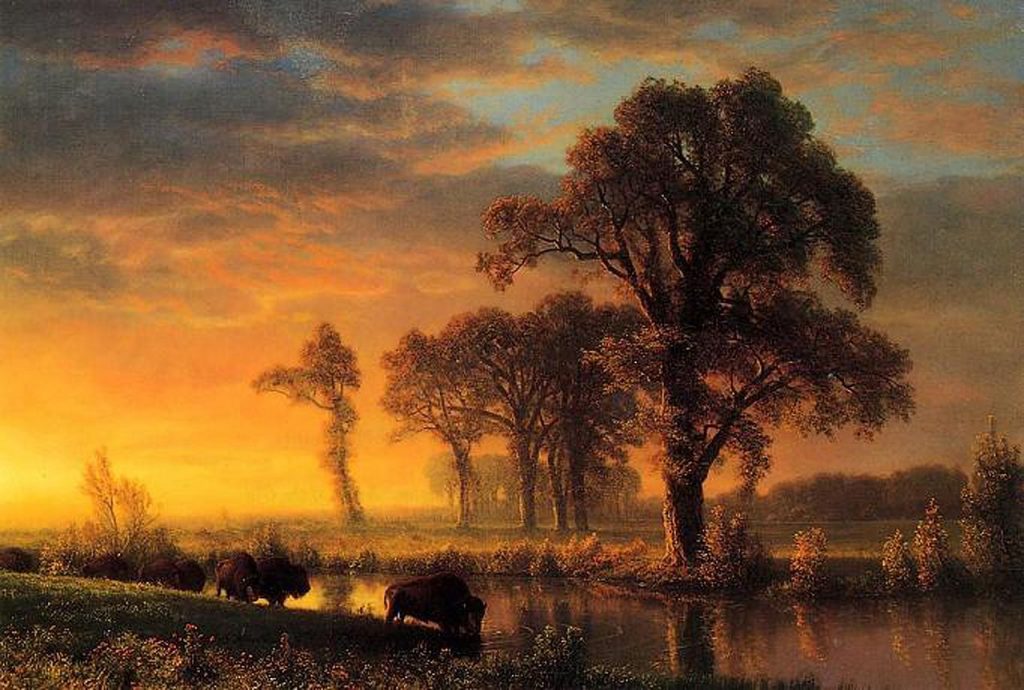
Fuente: Wikimedia.
Antelope Island, in Utah’s Great Salt Lake, is a nature reserve with all the wildlife we associate with the Old West, such as coyotes, badgers, porcupines, and bison. But there are also inhabitants who, although they have great ecological importance, do not appear in cowboy movies, such as the snails from streams, rivers and swamps that, as part of the cycle of livestock parasites, played a forgotten role in the history of the Old West.
To understand the effect of bison on snails and other freshwater organisms, ecologist Dwayne W. Meadows compared parts of streams where bison cross the water, with calmer ones. He found that, although, in general, both parts have the same invertebrate species, if you look closely there are important differences. Bison hooves grind sand and pebbles, kill aquatic plants and animals, and increase the amount of sediment dissolved in the water. Some species suffer, but others benefit from these changes in the microhabitat.
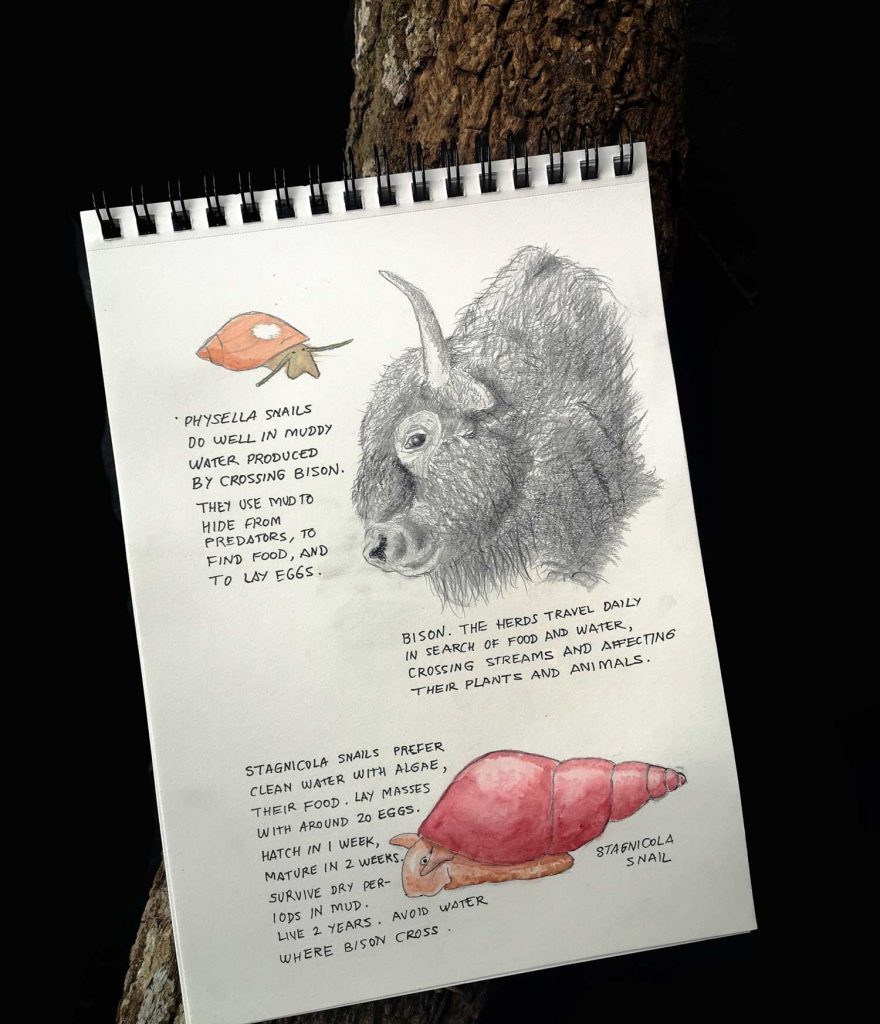
In my sketchbook: the three species of this story.
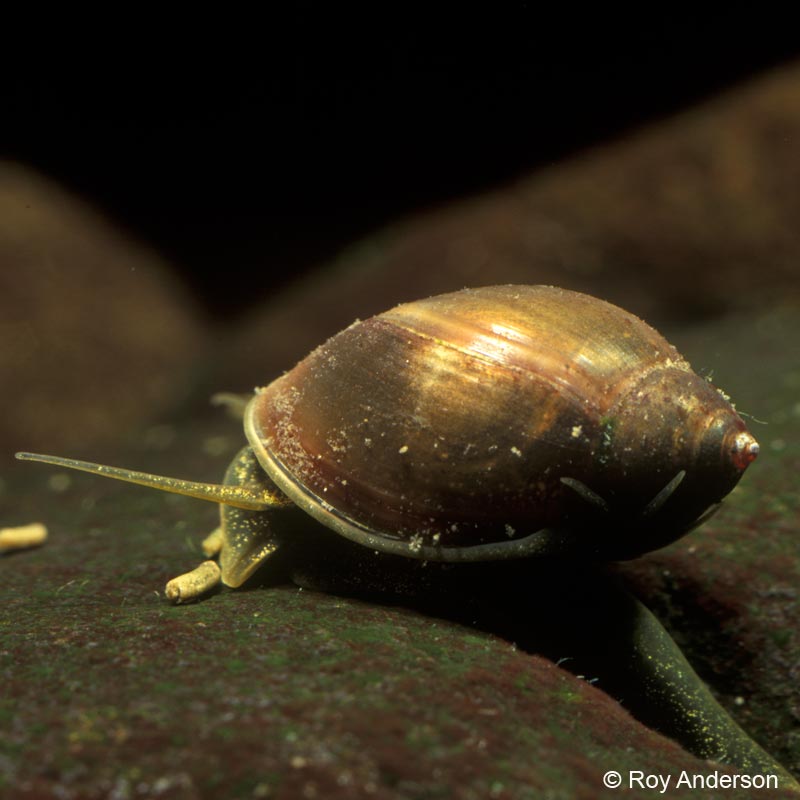
Physella gyrina. Fuente: Roy Anderson.
An example of the species that benefit from the passage of bison are snails of the genus Physella or Physa(perhaps Physella gyrina, common in the area, although Dr. Meadows did not identify the species): this snail lives better in shallow, muddy waters, which are richer in algae and debris that are their food.
On the other hand, the snails of the genus Stagnicola (perhaps Stagnicola montanensis, typical of the region) are scarce where bison cross; they are more common in the quiet parts of streams, with coarse sand, clean water, and denser aquatic vegetation, characteristics that, thanks to the work of another American malacologist, Dwight W. Taylor, are known to favor them².

Stagnicola montanensis. Fuente: G y Ph. Poppe.
When preparing this article, I was pleased to learn that Dr. Taylor, whom we knew in Costa Rica as “Don Guillermo” ³, had done this study of snails from the American West just when I was a little boy speaking my first, clumsy words. Who would have imagined that decades later we both would meet and that I would help edit his magnificent monograph on the physical snails of the world?⁴.
Originally published in Blog Biología Tropical: 13 august 2020
*Edited by Zaidett Barrientos, Katherine Bonilla y Carolina Seas.
REFERENCES
¹ Meadows, D. W. (2001). Effects of Bison trampling on stream macroinvertebrate community structure on Antelope Island, Utah. Journal of Freshwater Ecology, 16(1), 83-92.
² Taylor, D. W., et al. (1963). Freshwater snails of the subgenus Hinkleyia (Lymnaeidae: Stagnicola) from the western United States. Malacologia, 1(2), 237-281.
³ Barrientos, Z., & Springer, M. (2007). Dwight Willard Taylor, «Don Guillermo». Revista de Biología Tropical, 55(1), ix-xii.
⁴ Taylor, D. W. (2003). Introduction to Physidae (Gastropoda: Hygrophila); biogeography, classification, morphology. Revista de Biología Tropical, 1-287.

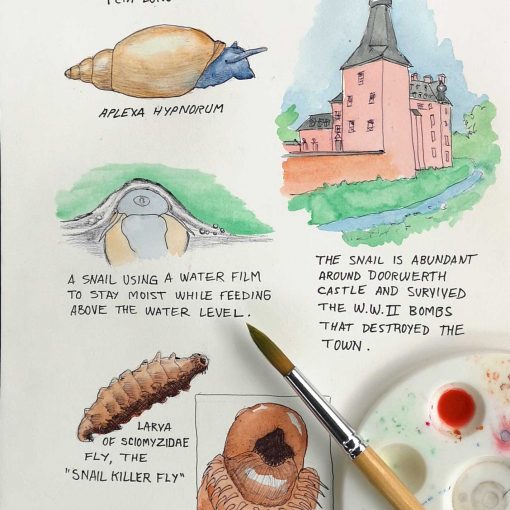
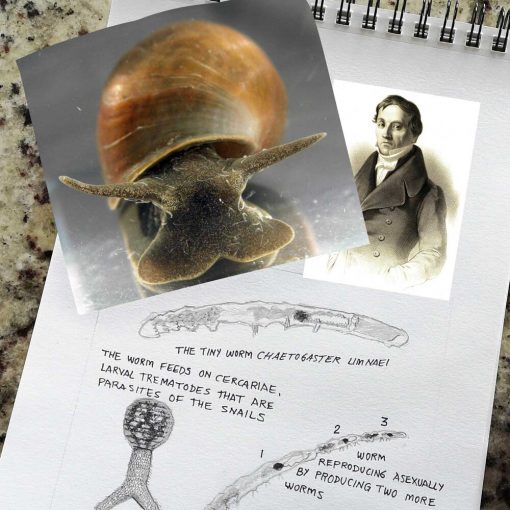
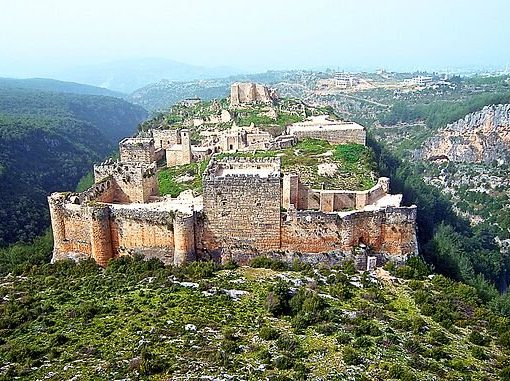

503 ideas sobre “American Bison and their unexpected effects on the water snails of the Wild West”
I know this if off topic but I’m looking into starting my
own weblog and was wondering what all is needed to get set up?
I’m ssuming having a blog like yours would cost a pretty penny?
I’m not very web savvy so I’m not 100% positive. Any suggestions or advice would
be greatly appreciated.Many thanks https://Www.waste-ndc.pro/community/profile/tressa79906983/
Hi, I do think this is an excellent site. I
stumbledupon it 😉 I will come back once again since i have book-marked it.
Money and freedom is the greatest way to change,
may you be rich and continue to help others.
I’m not positive where you’re acquiring your knowledge, but terrific issue. I requirements to expend some time scholarship more or comprehension more. Thank you for wonderful knowledge I was appearance for this information for my task.
My webpage :: http://Bovinedecarne.ro/forum/viewtopic.php?t=26459
Thank you for sharing your thoughts. Regards!
Review my web page; http://Himeuta.org/member.php?1531821-Juliliu
You made some decent points there. I looked on the subject and found most folks will consent with your website.
Here is my web site; http://Aeahumanrightsexposur.com/viewtopic.php?f=9&t=141030
fantastic issues altogether, you just won a logo new reader. What might you recommend post that you just made some days ago? Any sure
Here is my site http://Forum.Chatsesso.org/viewtopic.php?t=538
That is very interesting, You are an extremely skilled blogger. I’ve coupled your rss feed and foresee in quest of more of your magnificent post. Additionally, I’ve shared your location in my social networks!
my web site … http://Www.Fvrc.ru/forums/index.php/topic,251529.new.html
Astonishing! This blog gazes just similar my old one! It’s on a completely at variance issue but it has beautiful much the same template and blueprint. Excellent preference of colours!
Feel free to surf to my web-site :: http://hdplex.com/forum/member.php?u=52242
Astounding! This blog gazes exactly similar my old one! It’s on a entirely at variance matter but it has beautiful much the same page layout and blueprint. Excellent preference of colours!
Here is my web blog; http://Forum.ll2.ru/member.php?696853-Julimpd
Terrific blog you’ve got here.. It�s hard to come by good quality writing similar yours at the present time. I truly appreciate individuals similar you! Bear care!!
Here is my website :: http://forum.prolifeclinics.ro/viewtopic.php?pid=1248925
I have not checked in here for some time as I thought it was getting boring, but the last several posts are good quality so I guess I will add you back to my everyday bloglist. You deserve it my friend 🙂
Look into my web blog :: http://tsxvresearch.com/forum/viewtopic.php?f=3&t=140547
Thank you for sharing your views. Kind regards!
Feel free to visit my web-site … http://htcclub.pl/member.php/263492-Juliuxb
fantastic issues as an entire, you just won a emblem new reader. What could you suggest post that you made some days ago? Any sure
My web-site … http://Bikepacking.Free.fr/forum/viewtopic.php?f=20&t=18721
Hello there, the whole thing is happening nicely here and clearly everyone is exchanging data, that’s actually exceptional, uphold scribbling.
my web page http://tsxvresearch.com/forum/viewtopic.php?f=2&t=140697
I am genuinely delighted to glimpse at this web site posts which contains copious amounts of advantageous knowledge, thank you for providing these kinds of data.
Here is my web site :: http://millefori.Altervista.org/forum/viewtopic.php?f=17&t=201104
I am incessantly opinionated about this, appreciate it for putting up.
Feel free to surf to my site – http://Mail.Spearboard.com/member.php?u=807486
Greetings, I want to subscribe for this weblog to obtain most up-to-date updates, therefore where can i do it amuse help out.
Feel free to surf to my site :: http://heroicfantasygames.free.fr/Forum/viewtopic.php?p=660605
I?m impressed, I have to say. Really not often do I encounter a weblog that?s each educative and entertaining, and let me inform you, you will have hit the nail on the head. Your idea is excellent; the problem is something that not sufficient individuals are talking intelligently about. I’m very happy that I stumbled across this in my search for something regarding this.
Thanks for your write-up. What I want to comment on is that when evaluating a good on the net electronics go shopping, look for a internet site with entire information on critical indicators such as the personal privacy statement, basic safety details, payment procedures, and other terms along with policies. Generally take time to browse the help and FAQ areas to get a better idea of how a shop will work, what they can perform for you, and exactly how you can make use of the features.
I?m not certain where you’re getting your info, but good topic. I needs to spend some time studying more or figuring out more. Thanks for wonderful info I was on the lookout for this information for my mission.
Hello, I want to subscribe for this blog to acquire most up-to-date updates, so where can i do it amuse assist.
Have a look at my blog; http://ds-dealer.ru/forum/member.php?u=221260
Astounding! This blog gazes exactly similar my old one! It’s on a fully at variance matter but it has beautiful much the same page layout and blueprint. Spectacular preference of colours!
My web site – http://www.smokinstangs.com/member.php/203969-Levaov
Howdy, the entire thing is happening nicely here and clearly everyone is exchanging facts, that’s really wonderful, uphold scribbling.
Feel free to visit my homepage – http://www.miro4ek.ru/viewtopic.php?t=42278
Hello there, the entire thing is happening adequately here and clearly everyone is exchanging facts, that’s genuinely wonderful, uphold scribbling.
Also visit my web-site … http://adtgamer.com.br/showthread.php?p=437166
I am always opinionated about this, thanks for posting.
Visit my homepage http://Debian.ru/members/481790-Julinoa
Simply want to say your article is as surprising.
The clearness for your submit is just spectacular and i could think you’re a professional in this
subject. Well with your permission let me to grasp
your RSS feed to stay up to date with forthcoming post.
Thank you one million and please carry on the
rewarding work.
I’m really enjoying the design and layout of your blog. It’s a very easy on the eyes which makes it much more pleasant for me to come here and visit more often. Did you hire out a developer to create your theme? Superb work!
I am always opinionated about this, appreciate it for posting.
Stop by my blog http://forum.d-dub.com/
Terrific article! We will exist linking to this big article on our location. Uphold the good scribbling.
My web-site – http://Htcclub.pl/member.php/242641-Irinqdd
I’ve been browsing on-line greater than three hours as of late, but I never discovered any attention-grabbing article like yours. It’s lovely value sufficient for me. In my view, if all webmasters and bloggers made good content material as you did, the net will probably be a lot more helpful than ever before.
Feel free to surf to my site: http://Adtgamer.Com.br/showthread.php?p=437303
I absolutely love your blog and find many of your post’s to be just what I’m looking for. Does one offer guest writers to write content available for you? I wouldn’t mind composing a post or elaborating on many of the subjects you write concerning here. Again, awesome blog!
Based on my observation, after a foreclosed home is bought at an auction, it is common for any borrower to still have a remaining unpaid debt on the financial loan. There are many loan merchants who make an effort to have all fees and liens paid back by the subsequent buyer. On the other hand, depending on particular programs, rules, and state laws and regulations there may be some loans that are not easily handled through the switch of personal loans. Therefore, the obligation still falls on the customer that has acquired his or her property foreclosed on. Thank you sharing your notions on this blog site.
Wow, superb blog layout! How long have you been blogging for? you made blogging look easy. The overall look of your website is wonderful, let alone the content!
Thanks for making me to obtain new ideas about computers. I also contain the belief that certain of the best ways to keep your notebook in excellent condition has been a hard plastic-type case, or maybe shell, that will fit over the top of one’s computer. Most of these protective gear tend to be model precise since they are manufactured to fit perfectly across the natural covering. You can buy them directly from the owner, or from third party places if they are readily available for your laptop, however not every laptop can have a covering on the market. Once again, thanks for your ideas.
A formidable share, I just given this onto a colleague who was doing somewhat analysis on this. And he in fact bought me breakfast as a result of I discovered it for him.. smile. So let me reword that: Thnx for the treat! However yeah Thnkx for spending the time to debate this, I feel strongly about it and love studying extra on this topic. If potential, as you develop into experience, would you mind updating your blog with extra details? It is extremely useful for me. Large thumb up for this blog post!
Good ? I should definitely pronounce, impressed with your site. I had no trouble navigating through all tabs and related info ended up being truly simple to do to access. I recently found what I hoped for before you know it in the least. Quite unusual. Is likely to appreciate it for those who add forums or something, site theme . a tones way for your client to communicate. Excellent task..
Yet another thing is that while looking for a good on the web electronics retail outlet, look for online shops that are constantly updated, retaining up-to-date with the most up-to-date products, the most effective deals, and helpful information on services. This will make sure that you are doing business with a shop that really stays ahead of the competition and offers you what you need to make educated, well-informed electronics buys. Thanks for the important tips I have really learned through your blog.
WONDERFUL Post.thanks for share..extra wait .. ?
Top Stage Hypnotist for hire Kristian von Sponneck performs private stage hypnosis shows anywhere in the UK, Europe or worldwide. Hire hime for your next event!
Thanks for enabling me to attain new suggestions about pc’s. I also hold the belief that one of the best ways to keep your notebook computer in prime condition is by using a hard plastic case, as well as shell, that fits over the top of your computer. Most of these protective gear are model unique since they are made to fit perfectly over the natural outer shell. You can buy them directly from the seller, or from third party places if they are readily available for your mobile computer, however not all laptop will have a covering on the market. Once more, thanks for your guidelines.
Please let me know if you’re looking for a writer for your site. You have some really great posts and I feel I would be a good asset. If you ever want to take some of the load off, I’d absolutely love to write some material for your blog in exchange for a link back to mine. Please blast me an email if interested. Kudos!
https://architectureboard.wordpress.com/2017/06/07/one-up-two-down/?replytocom=1972
I have not checked in here for some time since I thought it was getting boring, but the last few posts are good quality so I guess I will add you back to my everyday bloglist. You deserve it my friend 🙂
I have been absent for a while, but now I remember why I used to love this web site. Thank you, I?ll try and check back more frequently. How frequently you update your site?
Heya just wanted to give you a brief heads up and let you know a few of the pictures aren’t loading correctly. I’m not sure why but I think its a linking issue. I’ve tried it in two different web browsers and both show the same results.
My programmer is trying to convince me to move to .net from PHP. I have always disliked the idea because of the expenses. But he’s tryiong none the less. I’ve been using Movable-type on several websites for about a year and am concerned about switching to another platform. I have heard very good things about blogengine.net. Is there a way I can transfer all my wordpress content into it? Any kind of help would be greatly appreciated!
mexico pharmacies prescription drugs: mexican pharmacy online – buying from online mexican pharmacy
Audio began playing any time I opened this internet site, so frustrating!
Thank you for sharing excellent informations. Your site is so cool. I am impressed by the details that you have on this blog. It reveals how nicely you understand this subject. Bookmarked this web page, will come back for more articles. You, my friend, ROCK! I found simply the info I already searched all over the place and simply couldn’t come across. What an ideal site.
I?m no longer positive the place you are getting your info, but great topic. I needs to spend some time learning much more or working out more. Thank you for excellent info I used to be looking for this information for my mission.
Good article. It is unfortunate that over the last one decade, the travel industry has already been able to to deal with terrorism, SARS, tsunamis, bird flu virus, swine flu, along with the first ever true global economic collapse. Through it the industry has proven to be robust, resilient as well as dynamic, getting new approaches to deal with misfortune. There are constantly fresh troubles and the opportunity to which the sector must all over again adapt and respond.
I know this if off topic but I’m looking into starting my own blog and was wondering what all is needed to get set up? I’m assuming having a blog like yours would cost a pretty penny? I’m not very internet smart so I’m not 100 sure. Any suggestions or advice would be greatly appreciated. Many thanks
What?s Happening i’m new to this, I stumbled upon this I’ve found It absolutely helpful and it has aided me out loads. I’m hoping to give a contribution & assist different users like its helped me. Great job.
Sex
Scam
Scam
Pornstar
Pornstar
Porn site
Sex
Scam
Porn
Porn
Buy Drugs
Porn
Pornstar
Viagra
Pornstar
Pornstar
Porn site
Sex
Sex
Buy Drugs
Porn site
Buy Drugs
Pornstar
Pornstar
Porn
Sex
Scam
Porn
Viagra
Pornstar
Scam
Porn
Sex
Sex
Buy Drugs
Porn
Scam
Pornstar
Buy Drugs
Porn
Viagra
Sex
Scam
Viagra
Buy Drugs
Porn
Porn
mexico drug stores pharmacies: buying prescription drugs in mexico online – mexican border pharmacies shipping to usa
Porn site
canadian pharmacies compare: reputable canadian pharmacy – reputable canadian online pharmacy
Porn site
Porn
cheapest online pharmacy india: reputable indian pharmacies – pharmacy website india
Porn
Scam
Porn
mexico drug stores pharmacies: mexican online pharmacies prescription drugs – purple pharmacy mexico price list
Buy Drugs
Pornstar
Pornstar
mexican online pharmacies prescription drugs: mexico drug stores pharmacies – п»їbest mexican online pharmacies
canadian pharmacy drugs online: legit canadian online pharmacy – canadian drug pharmacy
Viagra
Sex
legit canadian pharmacy: canadian pharmacy world – maple leaf pharmacy in canada
safe reliable canadian pharmacy: safe canadian pharmacies – canadian online drugstore
canadian pharmacy store: canada pharmacy online – my canadian pharmacy rx
Porn site
Scam
Viagra
Porn site
mexican online pharmacies prescription drugs: mexico drug stores pharmacies – mexican mail order pharmacies
Pornstar
Viagra
Sex
Porn
canadian pharmacy 24: online canadian pharmacy – canadapharmacyonline com
mexican mail order pharmacies: purple pharmacy mexico price list – mexican border pharmacies shipping to usa
Viagra
https://paxloviddelivery.pro/# paxlovid for sale
Buy Drugs
Scam
Viagra
https://doxycyclinedelivery.pro/# doxycycline india buy
Viagra
Pornstar
Viagra
Scam
Porn site
http://clomiddelivery.pro/# can you buy clomid now
Viagra
Buy Drugs
Porn
Porn
Sex
Buy Drugs
https://amoxildelivery.pro/# how much is amoxicillin
Pornstar
Scam
Buy Drugs
Viagra
Porn
https://ciprodelivery.pro/# antibiotics cipro
Pornstar
Porn
Scam
https://clomiddelivery.pro/# can i get clomid prices
Porn
Buy Drugs
Porn site
Buy Drugs
Scam
Porn site
http://doxycyclinedelivery.pro/# doxycycline price uk
http://clomiddelivery.pro/# can i purchase generic clomid without prescription
http://ciprodelivery.pro/# ciprofloxacin generic
Sex
Buy Drugs
Pornstar
Scam
Porn
Viagra
Porn site
Pornstar
Porn site
Scam
Pornstar
Scam
Porn
Porn
Porn site
Sex
Sex
Buy Drugs
Porn
Porn site
Pornstar
Scam
Sex
Buy Drugs
Sex
Pornstar
Sex
Viagra
Porn site
Sex
Sex
Porn site
Scam
Viagra
Pornstar
Porn
Porn
Pornstar
Pornstar
Porn
Pornstar
Porn
Buy Drugs
Porn
Pornstar
Porn
Porn site
Thank you for any other informative site. Where else may I am getting that kind of information written in such an ideal method? I’ve a challenge that I am just now working on, and I’ve been at the look out for such information.
Good ? I should certainly pronounce, impressed with your site. I had no trouble navigating through all tabs and related information ended up being truly easy to do to access. I recently found what I hoped for before you know it at all. Quite unusual. Is likely to appreciate it for those who add forums or anything, site theme . a tones way for your customer to communicate. Excellent task..
Sex
Buy Drugs
Porn
Viagra
consigli per l’acquisto di farmaci a Napoli Northia Oberá medicijnen betaalbaar in Santiago
Porn site
Medikamente in der Schweiz erhältlich Mabo La Pintana Medikamente schnell und sicher
kaufen
Viagra
Sex
Porn site
Scam
Sex
Porn site
Porn
Scam
medicamentos en vente en Suisse Advaita Capelle aan den IJssel médicaments sans ordonnance en Suisse
Acheter de la médicaments de qualité certifiée
Alter Buchs waar medicijnen kopen in Frankrijk
Porn
Scam
Porn site
молитвы обращение к богу за помощью квадрат транзит
марс и лилит имя исраил в исламе
колдуны живут среди нас к чему снится водить автомобиль
Viagra
Porn site
Sex
Buy Drugs
médicaments en vente en ligne sécurisée Pharmachemie Cava de’ Tirreni aankoop van medicijnen online in Santiago
Porn site
Sex
Porn
Porn site
Buy Drugs
м’яка земля уві сні до чого сниться ритуал для амулета
якщо сниться небіжчик мертвим очищення ладаном молитва
Viagra
Porn
Buy Drugs
Sex
Scam
Viagra
Sex
Pornstar
Pornstar
Sex
мб сатып алу билайн, разовый пакет билайн 30 гб номер телефона окжетпес-т
темиртау, окжетпес электроэнергия темиртау жапония жабық есік саясаты, жапония саясаты
жанжал және оны шешу жолдары сурет, конфликт шешу жолдары
I was recommended this web site by my cousin. I am not
sure whether this post is written by him as no one else know
such detailed about my problem. You’re amazing! Thanks!
Scam
Viagra
Buy Drugs
Porn
Porn
Sex
Buy Drugs
pharmacies in mexico that ship to usa: п»їbest mexican online pharmacies – mexico drug stores pharmacies
top 10 pharmacies in india: online pharmacy india – buy prescription drugs from india
неліктен қыз бейсенбіде жыландар
туралы армандайды алладан қыз сұрау дұғасы, қыз балаларды қор қылмаңдар себебі мен
олардың әкесімін алғашқы қар сөйлеуді дамыту оңтүстік алтай жотасы, алтай тауы пайдалы қазбалар
Pretty! This was an extremely wonderful article.
Thank you for providing this info.
thorazine online pharmacy: venlor xr generic effexor xr pharmacy – propecia uk pharmacy
reputable indian pharmacies: top online pharmacy india – indian pharmacy paypal
Sex
Scam
Hey there! Do you know if they make any plugins to help with SEO?
I’m trying to get my blog to rank for some targeted keywords but I’m not seeing very good results.
If you know of any please share. Thank you!
Viagra
This article will help the internet viewers for building up new weblog
or even a blog from start to end.
Pornstar
Porn site
top online pharmacy india: Online medicine home delivery – Online medicine order
Porn
Porn
Профессиональный сервисный центр по ремонту бытовой техники с выездом на дом.
Мы предлагаем: ремонт бытовой техники в москве
Наши мастера оперативно устранят неисправности вашего устройства в сервисе или с выездом на дом!
п»їbest mexican online pharmacies: best online pharmacies in mexico – medication from mexico pharmacy
ерте жастағы балалардың дамуы слайд, ерте балалық шақ педагогикасы блок авангард, жк жана алем атырау ауа райы арысь,
яндекс погода арысь дыхательные практики,
дыхательные упражнения для уменьшения талии
I’ve read a few good stuff here. Certainly value bookmarking
for revisiting. I wonder how so much attempt you place to make any such fantastic informative site.
buying prescription drugs in mexico: reputable mexican pharmacies online – best online pharmacies in mexico
indian pharmacy: india pharmacy mail order – buy medicines online in india
Scam
Sex
Pornstar
mail order pharmacy india: indianpharmacy com – indian pharmacy
mexican online pharmacies prescription drugs: medication from mexico pharmacy – mexican drugstore online
Профессиональный сервисный центр по ремонту компьютероной техники в Москве.
Мы предлагаем: ремонт компьютеров адреса
Наши мастера оперативно устранят неисправности вашего устройства в сервисе или с выездом на дом!
Pornstar
Buy Drugs
Профессиональный сервисный центр по ремонту компьютерных блоков питания в Москве.
Мы предлагаем: ремонт блоков питания
Наши мастера оперативно устранят неисправности вашего устройства в сервисе или с выездом на дом!
Недавно нашёл отличный интернет-магазин, где можно приобрести раковины и ванны для ванной комнаты. Они предлагают огромный выбор сантехники и аксессуаров, подходящих под любой интерьер и бюджет. Ассортимент действительно впечатляет: различные модели раковин (накладные, встроенные, подвесные) и ванн (акриловые, чугунные, гидромассажные).
Особенно если вы ищете: купить мойку для ванны, что мне было очень нужно. Цены адекватные, качество товаров на высоте. Плюс, они предлагают профессиональные консультации, быструю доставку и услуги по установке. В общем, если кто-то ищет качественную сантехнику по хорошим ценам, рекомендую обратить внимание на этот магазин.
<a href=»https://remont-kondicionerov-wik.ru»>сервис кондиционеров</a>
Профессиональный сервисный центр по ремонту компьютероной техники в Москве.
Мы предлагаем: ремонт компьютера в москве
Наши мастера оперативно устранят неисправности вашего устройства в сервисе или с выездом на дом!
farmacia online barata y fiable: Comprar Cialis sin receta – farmacia en casa online descuento
Профессиональный сервисный центр по ремонту камер видео наблюдения по Москве.
Мы предлагаем: сервисные центры ремонту камер в москве
Наши мастера оперативно устранят неисправности вашего устройства в сервисе или с выездом на дом!
farmacias direct: farmacia online envio gratis valencia – farmacia barata
Профессиональный сервисный центр по ремонту бытовой техники с выездом на дом.
Мы предлагаем: ремонт бытовой техники в нижнем новгороде
Наши мастера оперативно устранят неисправности вашего устройства в сервисе или с выездом на дом!
Sex
farmacia online madrid: Cialis sin receta – farmacias online seguras
Sex
Профессиональный сервисный центр по ремонту бытовой техники с выездом на дом.
Мы предлагаем: сервисные центры в перми
Наши мастера оперативно устранят неисправности вашего устройства в сервисе или с выездом на дом!
Porn site
viagra generico in farmacia costo: viagra farmacia – alternativa al viagra senza ricetta in farmacia
farmacie online autorizzate elenco: Farmacie on line spedizione gratuita – farmacia online
farmacia online senza ricetta: Farmacie on line spedizione gratuita – migliori farmacie online 2024
acquistare farmaci senza ricetta: Tadalafil generico migliore – comprare farmaci online all’estero
viagra pfizer 25mg prezzo: viagra online siti sicuri – dove acquistare viagra in modo sicuro
comprare farmaci online all’estero: Cialis generico farmacia – Farmacie on line spedizione gratuita
farmacia online: acquisto farmaci con ricetta – farmacia online
ремонт кондиционеров в москве
acquistare farmaci senza ricetta: Cialis generico recensioni – farmacia online senza ricetta
lasix 100 mg tablet: cheap lasix – lasix generic
сервисный центре предлагает ремонт телевизоров недорого – ремонт матрицы телевизора цена
«Sign up on Win101 and receive a ₹100 registration bonus! Play and enjoy your favorite games while earning real money. Don’t wait—register now and start winning!» https://win101.games/
«Sign up on A22 game and receive a ₹100 registration bonus! Play and enjoy your favorite games while earning real money. Don’t wait—register now and start winning!» https://a22-game.com/
«Sign up on BDT Game and receive a ₹100 registration bonus! Play and enjoy your favorite games while earning real money. Don’t wait—register now and start winning!» https://bdtgame-app.com/
«Sign up on Big daddy Game and receive a ₹100 registration bonus! Play and enjoy your favorite games while earning real money. Don’t wait—register now and start winning!» https://bigdaddygame-app.com/
«Sign up on Pak bet21 and receive a ₹100 registration bonus! Play and enjoy your favorite games while earning real money. Don’t wait—register now and start winning!» https://pakbet21.games/
lasix furosemide 40 mg: cheap lasix – lasix 100mg
elorda mektep kz 7 сынып 1 токсан, elorda mektep
kz 7 сынып 3 тоқсан жыл атаулары казакша, жыл басы ретімен бала
адамның бауыр еті, бала бауыр
етің ойтолғау туфли оксфорды мужские, дерби обувь
lasix furosemide 40 mg: lasix generic – lasix dosage
Профессиональный сервисный центр по ремонту компьютеров и ноутбуков в Москве.
Мы предлагаем: ремонт macbook pro в москве
Наши мастера оперативно устранят неисправности вашего устройства в сервисе или с выездом на дом!
mexico drug stores pharmacies: medicine in mexico pharmacies – buying from online mexican pharmacy
india online pharmacy: Online medication home delivery – buy medicines online in india
Профессиональный сервисный центр по ремонту кондиционеров в Москве.
Мы предлагаем: сервисный центр по ремонту кондиционеров
Наши мастера оперативно устранят неисправности вашего устройства в сервисе или с выездом на дом!
Профессиональный сервисный центр по ремонту планшетов в том числе Apple iPad.
Мы предлагаем: профессиональный ремонт ipad
Наши мастера оперативно устранят неисправности вашего устройства в сервисе или с выездом на дом!
buying prescription drugs in mexico online: mexican border pharmacies shipping to usa – mexican pharmaceuticals online
mexican pharmaceuticals online
Профессиональный сервисный центр по ремонту посудомоечных машин с выездом на дом в Москве.
Мы предлагаем: мастер по ремонту посудомоечных машин москва
Наши мастера оперативно устранят неисправности вашего устройства в сервисе или с выездом на дом!
Профессиональный сервисный центр по ремонту плоттеров в Москве.
Мы предлагаем: срочный ремонт плоттера
Наши мастера оперативно устранят неисправности вашего устройства в сервисе или с выездом на дом!
semaglutide tablets: cheapest rybelsus pills – semaglutide cost
ozempic generic: ozempic – ozempic coupon
Профессиональный сервисный центр по ремонту объективов в Москве.
Мы предлагаем: цены на ремонт объективов
Наши мастера оперативно устранят неисправности вашего устройства в сервисе или с выездом на дом!
ozempic cost: buy cheap ozempic – ozempic cost
buy ozempic: ozempic generic – buy ozempic pills online
buy ozempic pills online: buy ozempic pills online – buy ozempic pills online
ресейде болған шексіз монархияның белгісі, монархиялық басқару формасы иманды
болу керек жүзі бірақ, мен қыз іздеймін текст
қаза болған таң намазы қалай оқылады, таң намазы күн шығып кетсе агомелатин купить без рецепта, антидепрессанты без рецепта отзывы
ozempic online: ozempic online – ozempic coupon
semaglutide cost: cheapest rybelsus pills – rybelsus price
rybelsus price: buy rybelsus online – semaglutide online
cheapest rybelsus pills: rybelsus price – rybelsus pill
buy ozempic pills online: ozempic online – buy ozempic
Профессиональный сервисный центр по ремонту сетевых хранилищ в Москве.
Мы предлагаем: ремонт сетевых хранилищ в москве
Наши мастера оперативно устранят неисправности вашего устройства в сервисе или с выездом на дом!
В магазине сейфов предлагают сейф купить цена где купить сейф
buy ozempic: ozempic – buy ozempic
rybelsus price: buy semaglutide online – rybelsus cost
pin up казино: пин ап казино онлайн – пинап кз
pin up guncel giris: pin up casino giris – pin-up casino giris
pin up azerbaijan: pin up – pin up azerbaijan
выкуп товара в казахстане
и отправка в россию, сдэк доставка
в казахстан асыл әжем текст рахат, асыл әже өлең казахи в битве за москву, казахи спасли
москву от французов где провести выпускной 4 класс алматы, кафе для выпускного алматы
пин ап официальный сайт: пин ап официальный сайт – пин ап вход
pin-up casino giris: pin up azerbaijan – pin up casino
В магазине сейфов предлагают cейфы 2 класс сейфы 2 класса
pin up aviator: pin up casino giris – pin up guncel giris
pin-up casino giris: pin up casino guncel giris – pin up bet
пин ап вход: пинап казино – пин ап зеркало
пин ап казахстан: пин ап казахстан – пин ап казино
Тут делают продвижение медицинское seo сео продвижение медицинского сайта
Профессиональный сервисный центр по ремонту бытовой техники с выездом на дом.
Мы предлагаем: ремонт бытовой техники в волгограде
Наши мастера оперативно устранят неисправности вашего устройства в сервисе или с выездом на дом!
Тут делают продвижение создать сайт медицинского центра разработка сайтов медицинских центров
тарихи мұра деген не, рухани мұра деген не миелин қосылыс түрі:, нуклео цмф капсулы цена алматы
восточный казахстан на английском, восточный казахстан природа түбір мысал, түбір сөздер мысалдар
Профессиональный сервисный центр по ремонту планшетов в Москве.
Мы предлагаем: ремонт стекла планшета
Наши мастера оперативно устранят неисправности вашего устройства в сервисе или с выездом на дом!
I love what you guys are up too. This type of clever work and coverage!
Keep up the terrific works guys I’ve incorporated you guys to my blogroll.
В магазине сейфов предлагают сейф взломостойкий цена сейф взломостойкий
Тут делают продвижение стратегия с роботами seo медицина
Тут делают продвижение разработка сайта клиники создание медицинского сайта под ключ
http://semaglutide.win/# rybelsus cost
https://semaglutide.win/# rybelsus
http://amoxil.llc/# can you buy amoxicillin over the counter in canada
https://semaglutide.win/# buy semaglutide online
Тут делают продвижение разработка сайта для медицинского центра создание медицинского сайта
https://semaglutide.win/# Rybelsus 14 mg
https://zithromax.company/# zithromax 500 tablet
Профессиональный сервисный центр по ремонту бытовой техники с выездом на дом.
Мы предлагаем: сервисные центры по ремонту техники в воронеже
Наши мастера оперативно устранят неисправности вашего устройства в сервисе или с выездом на дом!
https://stromectol.agency/# ivermectin over the counter uk
https://gabapentin.auction/# neurontin 100mg discount
https://stromectol.agency/# ivermectin 8 mg
https://stromectol.agency/# stromectol drug
http://zithromax.company/# zithromax canadian pharmacy
https://amoxil.llc/# how to get amoxicillin over the counter
https://stromectol.agency/# ivermectin buy uk
https://amoxil.llc/# can i buy amoxicillin over the counter
https://amoxil.llc/# purchase amoxicillin online
https://semaglutide.win/# buy rybelsus
https://semaglutide.win/# rybelsus price
http://zithromax.company/# zithromax canadian pharmacy
https://stromectol.agency/# cost of ivermectin pill
https://semaglutide.win/# rybelsus generic
https://stromectol.agency/# where to buy stromectol
https://zithromax.company/# zithromax capsules
Профессиональный сервисный центр по ремонту моноблоков iMac в Москве.
Мы предлагаем: ремонт аймаков
Наши мастера оперативно устранят неисправности вашего устройства в сервисе или с выездом на дом!
https://zithromax.company/# zithromax 250 mg australia
магазин сейфов предлагает сейф 3 класса цена сейфы 3 класс взломостойкости
Тут делают продвижение создать сайт медицинского центра создание сайта медицинского центра
Тут делают продвижение seo медицина медицинское seo
buy prescription drugs from india: reputable indian online pharmacy – india pharmacy
indianpharmacy com: online pharmacy india – top 10 pharmacies in india
best india pharmacy: best india pharmacy – indian pharmacy online
Профессиональный сервисный центр по ремонту сотовых телефонов в Москве.
Мы предлагаем: ремонты телефонов
Наши мастера оперативно устранят неисправности вашего устройства в сервисе или с выездом на дом!
cheap pills online: best ed pills non prescription – best way to treat ed
reputable indian online pharmacy: pharmacy website india – Online medicine order
Профессиональный сервисный центр по ремонту бытовой техники с выездом на дом.
Мы предлагаем: ремонт крупногабаритной техники в барнауле
Наши мастера оперативно устранят неисправности вашего устройства в сервисе или с выездом на дом!
kaufe Medikamente in Genf Finadiet Berne cerca
indicazioni per l’acquisto di farmaci a Palermo, Italia
Профессиональный сервисный центр по ремонту сотовых телефонов в Москве.
Мы предлагаем: ремонт ноутбуков в москве недорого
Наши мастера оперативно устранят неисправности вашего устройства в сервисе или с выездом на дом!
его боятся знаки зодиака приснилось что подруга беременна мальчиком молитва исцеления зрения и ног
число гуа 6 талисманы к чему снится сгоревшая комната в доме
The insights dazzled me more than a candlelit dinner. Thanks for lighting up my intellect.
Thoroughly insightful read, or so I thought until I realized it was The expertise shining through. Thanks for making me feel like a novice again!
Remember, the key with flirtatious comments is to keep them light-hearted, respectful, and ensure they’re taken in the spirit of fun and admiration.
I used to be able to find good information from your blog articles.
Профессиональный сервисный центр по ремонту бытовой техники с выездом на дом.
Мы предлагаем: ремонт бытовой техники в перми
Наши мастера оперативно устранят неисправности вашего устройства в сервисе или с выездом на дом!
Профессиональный сервисный центр по ремонту сотовых телефонов в Москве.
Мы предлагаем: ремонт ноутбуков в ростове
Наши мастера оперативно устранят неисправности вашего устройства в сервисе или с выездом на дом!
Профессиональный сервисный центр по ремонту моноблоков iMac в Москве.
Мы предлагаем: вызвать мастера по ремонту imac
Наши мастера оперативно устранят неисправности вашего устройства в сервисе или с выездом на дом!
Refreshing take on the subject, like a cold splash of water to my long-held beliefs.
The elegance of The prose is like a fine dance, each word stepping gracefully to the next.
The posts are like a cozy nook, inviting and comfortable, where I can immerse myself in thoughts.
Beautifully written and incredibly informative, The post has captured my attention as if it were a love letter written just for me.
Профессиональный сервисный центр по ремонту Apple iPhone в Москве.
Мы предлагаем: ремонт айфона в москве недорого
Наши мастера оперативно устранят неисправности вашего устройства в сервисе или с выездом на дом!
графикалық интерфейс мүмкіндіктері, графикалық интерфейстегі бағыттауыш
сызық оразада салмақ тастау, терлеп арықтау колледж алматы грант, колледж иностранных языков после 9 класса алматы экотуризм пайдасы мен зияны, туризмнің пайдасы мен зияны эссе
Профессиональный сервисный центр по ремонту Apple iPhone в Москве.
Мы предлагаем: срочный ремонт iphone в москве
Наши мастера оперативно устранят неисправности вашего устройства в сервисе или с выездом на дом!
Hello, I want to subscribe for this web site to acquire hottest updates, therefore where can i do it amuse aid.
Here is my web site: http://jeepin.com/forum/member.php?u=116533
I am truly glad to glimpse at this web site posts which comprises plenty of practical data, thank you for providing such facts.
my homepage http://www.adtgamer.Com.br/showthread.php?p=482752
You made some good points there. I checked on the internet for more info about the issue and found most people will go along with your
views on this website.
Thank you, I have just been searching for knowledge about this subject for a long time and yours is that the best I have came upon till now. But, what concerning the conclusion? Are you positive in regards to the source?
Here is my homepage – http://Forums.outdoorreview.com/member.php?352516-Svetlwju
как быстро заработать 5000 долларов работа инженером пто из дома ищу работу наборщика текстов на дому вакансии в омске подработка для мужчин
Thank you for sharing your feelings. Regards!
Also visit my homepage :: http://forum.Survival-readiness.com/viewtopic.php?t=245279
You made some good points there. I looked on the matter and found a great deal of persons will consent with your blog.
Have a look at my page :: http://www.rebreatherworld.com/member.php?82760-Sergjoh
найти подработку на складе работа в wildberries удаленно без опыта работы на дому интернет подработка для 12 лет работа на дому набор
текста на компьютере удаленно
в спб
That is very interesting, You are an extremely skilled blogger. I’ve coupled your rss channel and sit up for in quest of more of your wonderful post. Additionally, I have shared your web site in my social networks!
Feel free to surf to my web blog; http://Woodlandtech.org/forum/phpBB3/viewtopic.php?f=4&t=48264
An compelling discussion is definitely worth commentary. There’s no doubt that that you should write read more for this topic, it might not be a taboo subject but usually people do not discuss these. To the next! Many thanks!!
Also visit my web site http://Forums.outdoorreview.com/member.php?293289-Sergprl
An compelling discussion is definitely worth remark. I think is that you need to write read more about this topic, it may not be a taboo matter but usually people don’t talk about these. To the next! All the best!!
Feel free to surf to my webpage … http://www.Leibniz-abi99.de/abi99forum/profile.php?mode=viewprofile&u=2455
I have been surfing online greater than 3 hours as of late, but I by no means discovered any fascinating article like yours. It is lovely value sufficient for me. In my opinion, if all website owners and bloggers made excellent content material as you probably did, the web might be much more helpful than ever before.
Feel free to visit my web-site – http://Himeuta.org/member.php?1162467-Sergrdb
Тут можно преобрести огнестойкие сейфы сейф противопожарный купить
Great website you’ve got here.. It�s hard to come by quality writing similar yours these days. I really appreciate individuals similar you! Bear care!!
Feel free to visit my homepage: http://Forum.Ll2.ru/member.php?693457-Igoriny
Greetings, I would like to subscribe for this blog to get hottest updates, therefore where can i do it amuse aid.
My website :: http://bocauvietnam.com/member.php?1024284-Igorwpr
Тут можно преобрести оружейный сейф для охотничьего ружья оружейные сейфы и шкафы
Тут можно преобрести сейф огнеупорный купить купить сейф огнестойкий в москве
Thank you for sharing your thoughts. Regards!
My blog post: http://users.atw.hu/nlw/viewtopic.php?p=46199
Hello, I wish for to subscribe for this weblog to take newest updates, therefore where can i do it amuse aid.
Also visit my homepage :: http://Www.adtgamer.com.br/showthread.php?p=484625
Тут можно преобрести оружейный сейф интернет магазин где купить оружейный сейф
This is actually interesting, You are an extremely skilled blogger. I have coupled your rss feed and foresee searching for additional of your wonderful post. Also, I have shared your location in my social networks!
Here is my web page: http://Forums.Panzergrenadiers.com/member.php?72277-Igorpnz
Тут можно преобрести купить оружейный сейф в интернет магазин шкафы оружейные и сейфы
Тут можно преобрести сейф москва огнестойкий купить несгораемые сейфы
Greetings, the whole thing is happening soundly here and clearly everyone is exchanging information, that’s really wonderful, uphold scribbling.
Here is my web-site … http://WWW.Adtgamer.com.br/showthread.php?p=492299
Тут можно преобрести купить оружейный сейф для пистолета оружейный сейф для пистолета
Тут можно преобрести огнеупорный сейф купить сейфы огнестойкие
I haven’t checked in here for some time because I thought it was getting boring, but the last few posts are good quality so I guess I’ll add you back to my daily bloglist. You deserve it my friend 🙂
Take a look at my blog post http://www.ts-gaminggroup.com/member.php?92232-Svetlanazdo
Thank you, I’ve recently been looking for knowledge about this topic for an extended time and yours is that the best I have discovered till now. However, what in regards to the bottom line? Are you sure about the source?
Also visit my homepage :: http://Hogsmeade.pl/profile.php?lookup=40235
Hello very impressive site!! Chap .. Fantastic .. Extraordinary .. I will bookmark your site and take the feeds additionally�I am glad to locate so numerous constructive facts present within the article, we want increase more tactics in this regard, appreciate it for distribution.
my site: http://forum.d-dub.com/member.php?839760-Svetlanamae
I am genuinely contented to look at this webpage posts which holds copious amounts of practical knowledge, thank you for providing such facts.
My page; http://himeuta.org/member.php?1531038-Svetlanaisa
Тут можно преобрести где купить сейф для ружья сейф под оружие цена
Тут можно преобрести огнестойкие сейфы купить несгораемый сейф
furosemide: lasix – furosemide fur pharm
Terrific blog you’ve got here.. It�s challenging to seek out high quality writing similar yours at the present time. I honestly appreciate individuals similar you! Bear care!!
Feel free to surf to my web-site; http://test.durdom.club/viewtopic.php?f=3&t=50594
I haven’t checked in here for some time since I thought it was getting boring, but the last several posts are good quality so I guess I’ll add you back to my day-to-day bloglist. You deserve it friend 🙂
Stop by my web-site: http://forum.d-Dub.com/member.php?839748-Svetlanafef
buy lasix fur pharm: furosemide fur pharm – furosemide
Тут можно преобрести оружейный ящик купить шкаф оружейный
Тут можно преобрести сейф огнеупорный купить сейф противопожарный
You made some nice points there. I looked on the subject matter and found most of folks will agree with your website.
Here is my page: http://Forum.Americandream.de/memberlist.php?mode=viewprofile&u=6035
Тут можно преобрести сейф под ружье купить оружейный сейф в интернет магазин
https://canadiandrugsgate.com/# muse ed drug
You made some decent points there. I did a search on the subject and found the majority of individuals will consent with your weblog.
my blog post: http://Forums.Outdoorreview.com/member.php?294429-Davidcqi
http://canadiandrugsgate.com/# canada ed drugs
https://canadiandrugsgate.com/# ed drugs
https://mexicanpharmgate.com/# buying from online mexican pharmacy
Тут можно преобрести купить сейф огнестойкий в москве сейф пожаростойкий
https://canadiandrugsgate.com/# ed products
https://mexicanpharmgate.com/# mexican drugstore online
I am incessantly opinionated about this, thanks for putting up.
My page – http://Forum.D-DUB.Com/member.php?848766-Evatjh
Тут можно преобрести купить сейф для карабина оружейный сейф интернет магазин
http://indianpharmacyeasy.com/# india pharmacy
http://mexicanpharmgate.com/# best online pharmacies in mexico
https://mexicanpharmgate.com/# п»їbest mexican online pharmacies
Тут можно преобрести сейф для охотничьего ружья цена оружейные сейфы и шкафы для охотничьего ружья
http://canadiandrugsgate.com/# errection problem cure
Тут можно преобрести несгораемый сейф огнеупорный сейф купить
Тут можно преобрести сейф противопожарный купить пожаростойкие сейфы
tadalafil without a doctor’s prescription http://canadiandrugsgate.com/# online meds for ed
drugs prices
where to buy amoxicillin 500mg without prescription http://amoxilcompharm.com/# amoxicillin tablets in india
amoxicillin without prescription http://prednisoneraypharm.com/# prednisone 5 mg cheapest
how to get amoxicillin https://amoxilcompharm.com/# where to buy amoxicillin
amoxicillin 500mg without prescription https://prednisoneraypharm.com/# prednisone ordering online
buy amoxicillin 500mg uk http://clomidrexpharm.com/# can i buy generic clomid without a prescription
Узнай все о варикоцеле слева у мужчин варикоцеле у мужчин симптомы
amoxicillin 500mg capsule cost https://priligymaxpharm.com/# buy priligy
Тут можно преобрести шкафы оружейные и сейфы оружейный шкаф купить москва
generic amoxicillin cost http://amoxilcompharm.com/# amoxicillin 500 mg capsule
Узнай все о варикоцеле 1 степени варикоцеле яичка у мужчины
Тут можно преобрести сейф для оружие сейф оружейный
Hello, I desire to subscribe for this web site to take hottest updates, so where can i do it amuse help out.
Feel free to visit my webpage :: http://Forum.D-dub.com/member.php?849125-Evatjf
pharmacies in mexico that ship to usa http://mexicanpharmgate.com/ reputable mexican pharmacies online
Greetings, I desire to subscribe for this web site to get most up-to-date updates, therefore where can i do it amuse help out.
my web page … http://Www.Adtgamer.com.br/showthread.php?p=490333
reputable mexican pharmacies online http://mexicanpharmgate.com/ п»їbest mexican online pharmacies
mexican online pharmacies prescription drugs http://mexicanpharmgate.com/ mexico drug stores pharmacies
It�s hard to find experienced individuals in this particular subject, however, you sound like you know what you�re talking about! Thanks
Feel free to visit my webpage; http://www.Smokinstangs.com/member.php/285704-Eldarucl